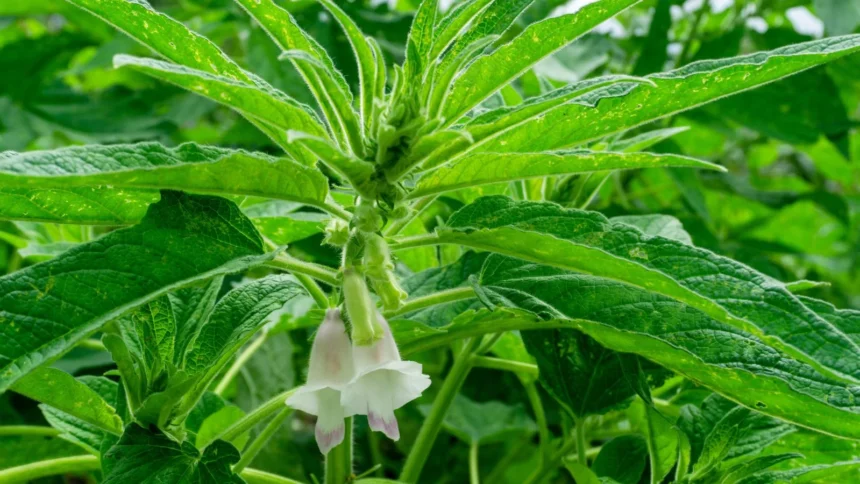The sesame plant is more than just a humble herb; it’s a powerhouse of flavor and nutrition, rich in history and culinary potential. With its delicate flowers and tiny seeds, this ancient crop has traveled the globe, finding its way into kitchens from Asia to Africa to the Americas. It’s time we take a closer look at this remarkable plant—its origins, how it grows, and the countless ways it can enhance your meals. Whether you’re an avid cook or simply curious about where your food comes from, understanding the sesame plant will open up new horizons for both taste buds and health benefits. Let’s dive deep into the world of sesame!
History and Origins of Sesame
The sesame plant has a rich history that dates back thousands of years. Its origins can be traced to the ancient regions of Africa and India. Archaeological evidence suggests that sesame was cultivated as early as 3000 BCE.
In these early civilizations, it was valued not only for its seeds but also for its oil. Ancient texts mention sesame in various cultures, highlighting its significance in trade and agriculture.
As time progressed, the cultivation spread across Asia and into the Mediterranean region. The Greeks referred to sesame as “sesamon,” showcasing its enduring presence in culinary practices.
Today, we celebrate this tiny seed’s legacy through diverse global cuisines, demonstrating how deeply rooted the sesame plant is in human history.
The Growing Process of Sesame Plants
The sesame plant thrives in warm climates, preferring well-drained soil. It flourishes best with plenty of sunlight and moderate rainfall.
Planting usually occurs in late spring, after the last frost. Seeds are sown directly into the ground, spaced evenly for optimal growth. The seedlings emerge within days, showcasing their delicate green leaves.
As they grow, sesame plants can reach heights of up to four feet. They produce beautiful white or purple flowers that bloom before forming seed pods. These pods contain tiny seeds packed with flavor and nutrition.
Watering is crucial during the growing phase; however, overwatering can harm roots. Farmers often rely on traditional methods or modern irrigation systems to maintain soil moisture without flooding.
Pest management is essential too; farmers use organic pesticides when necessary to protect their crops from common threats like aphids and beetles. With care and attention, these resilient plants flourish beautifully under ideal conditions.
Nutritional Benefits of Sesame Seeds
Sesame seeds pack a powerful nutritional punch. They’re tiny but mighty, loaded with essential nutrients that support overall health.
Rich in healthy fats, particularly polyunsaturated fatty acids, they promote heart health and reduce cholesterol levels. These little seeds are also an excellent source of protein, making them ideal for vegetarians and vegans.
Vitamins like B1 (thiamine) and minerals such as calcium and magnesium contribute to energy production and bone strength. The antioxidants found within sesame seeds help fight inflammation, boosting your immune system.
Furthermore, the presence of lignans offers potential benefits for hormonal balance. Incorporating sesame into your diet isn’t just tasty; it’s a simple way to enhance your nutrition while enjoying versatile flavors!
Culinary Uses for Sesame
Sesame seeds are a versatile ingredient that can elevate a variety of dishes. Their nutty flavor adds depth to both savory and sweet recipes.
In Asian cuisine, they are often sprinkled on sushi rolls or used in stir-fries. The crunchiness complements soft textures beautifully.
Middle Eastern dishes also shine with sesame’s presence. Tahini, made from ground sesame seeds, offers a rich base for hummus and dressings.
Baking enthusiasts love incorporating sesame into bread and pastries. It lends an appealing texture while enhancing the overall taste profile.
For breakfast lovers, toasted sesame seeds can be added to granola or oatmeal for an extra nutrition boost.
Even desserts benefit from their unique flavor! Think cookies topped with crushed sesame or ice creams infused with tahini for an unexpected twist.
Unique Recipes using Sesame
Sesame seeds add a delightful crunch and a nutty flavor to various dishes. Try making sesame-crusted chicken for dinner. Simply coat chicken breasts in a mixture of crushed sesame seeds, breadcrumbs, and spices before baking them until golden brown.
For a unique twist on classic hummus, blend tahini with chickpeas, garlic, lemon juice, and olive oil. The rich creaminess from the tahini makes this dip irresistible.
Looking for an exciting dessert? Consider creating black sesame ice cream. Combine cooked black sesame paste with coconut milk and sweetener for an exotic treat that’s both creamy and flavorful.
If you’re in the mood for something light yet satisfying, whip up a refreshing Asian slaw using cabbage, carrots, bell peppers, and toasted sesame dressing. It’s perfect as a side dish or main course topping.
These recipes highlight how versatile the sesame plant can be in your kitchen!
Conclusion
The sesame plant has a rich history that connects cultures and cuisines around the world. Its journey from ancient times to modern kitchens reflects its adaptability and significance in various culinary traditions.
From the initial stages of growth to harvesting, cultivating sesame is a rewarding process. Each seed holds immense nutritional benefits, making them not only delicious but also healthy additions to our diets. The versatility of sesame seeds shines through in countless recipes, whether sprinkled on salads or incorporated into sauces.
Exploring unique recipes using sesame opens up new avenues for creativity in cooking. From tahini dressings to homemade granola bars, these tiny seeds can elevate any dish with their nutty flavor and delightful crunch.
As we appreciate the contributions of the sesame plant, it becomes clear how intertwined this remarkable crop is with human culture and cuisine across generations. Embracing its flavors allows us all to enjoy a taste of history blended seamlessly with contemporary cooking practices.


